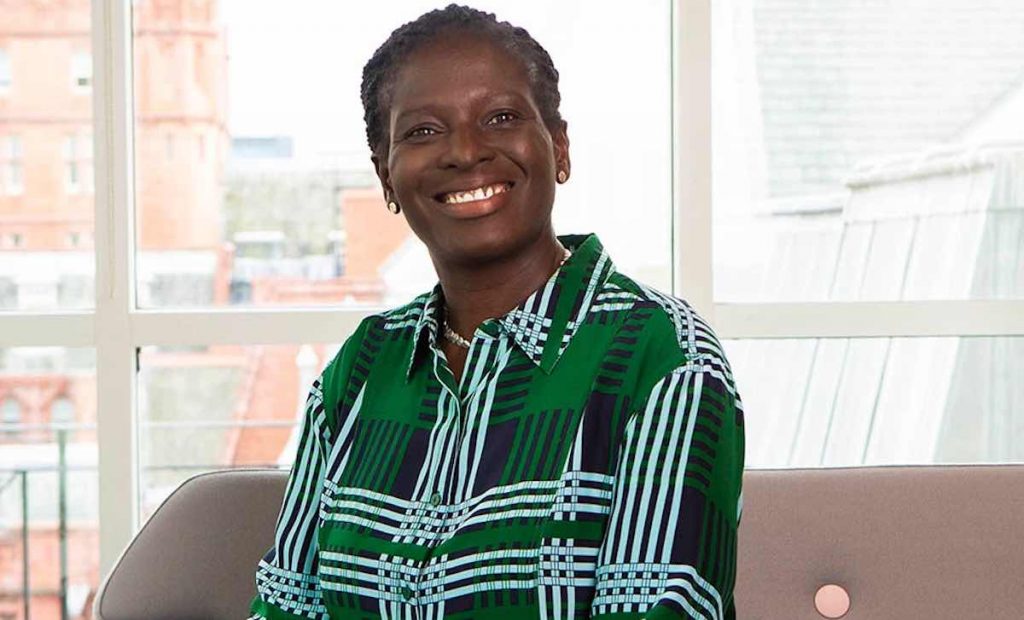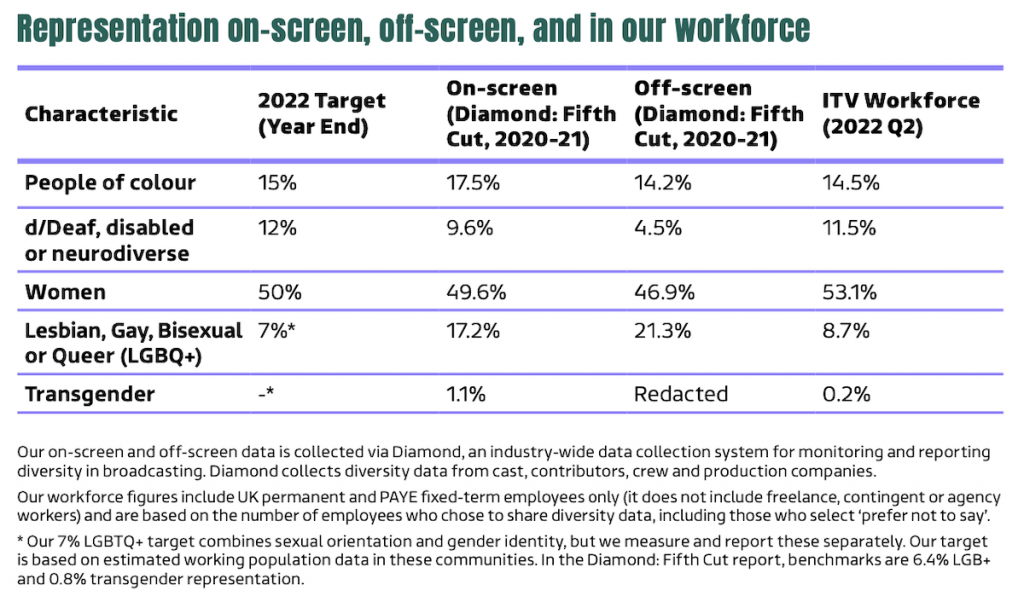
After more than 35 years of operation, TBI is closing its doors and our website will no longer be updated daily. Thank you for all of your support.
UK’s ITV sets first-ever target to increase working-class representation
The UK’s ITV has, for the first time, set itself a target to increase the number of its staff coming from working class backgrounds.
The target, which was revealed alongside the publication of ITV’s Diversity Acceleration Plan Report 2022, will see the commercial operator aiming to ensure that the number of its employees from working-class backgrounds hits 33% by 2025.
ITV said it had asked three questions around class, with the target “based on how colleagues answer the question about the occupation of their main household earner when they were 14.”
Findings in the 2022 report found that 51% of employees came from a “professional socio-economic background”, against a national average of 37%, while only 30% of staff came from a “working class” background. The national average is 39%.x
On and off-screen
Figures for ITV’s representation on-screen and off-screen came from data collected via the Creativity Diversity Network’s Diamond: Fifth Cut Report 2020-21 (see below), although the broadcaster did publish “intersectional data” for the first time.
The figures revealed that the proportion of women of colour and Black women at ITV (8.7% and 2.1% respectively) exceeded the national average (7% and 1.7%, based on the UK’s 2011 census).
However, men of colour were under-represented (5.5% against a national average of 7%), with Asian and Black men standing at 2.4% (versus national average of 3.8%) and 1.2% (versus national average of 1.6%).
Across ITV, more colleagues agreed that ‘I feel I can be my authentic self at work’ in 2021, the broadcaster said, but people of colour, particularly Black colleagues, and d/Deaf, disabled and neurodiverse colleagues were still less likely to agree with this statement compared to White and non-disabled colleagues.
“By looking at the representation of colleagues with multiple protected characteristics, such as d/Deaf, disabled or neurodiverse people of colour, enables ITV to further remove barriers and better understand colleagues’ experiences,” the broadcaster said.
Future plans
ITV said the next phase of its Diversity Acceleration Plan 2022-25 is “to drive further long-lasting change” by “creating and showcasing content by, with and for everyone, connecting and reflecting modern audiences.”
The proportion of people of colour in lead roles across its top 50 programmes (by viewing) stood at 26% in the year ending May 2022, up from 21 and 17% in 2021 and 2020 respectively.
Representation on new commissions remained level: 21% of lead roles were held by people of colour on shows new series in July 2019-May 2020, rising to 31% last year and increasing to 32% in 2022.
The broadcaster also pointed to initiatives including its Disability Access Passports, Amplify and Fresh Cuts plans, as well as the Step Up 60 scheme, as ways it is aiming to improve DNI. The latter scheme aims to provide the chance for at least 60 people to secure their first ITV senior editorial and production role, across directing, writing or producing episodes of ITV’s new and returning drama, factual and entertainment shows.
ITV also launched the Diversity Commissioning Fund earlier this year, reserving £80m of its commissioning budget over three years, to drive change towards racial and disability equity in whose stories get told and who gets opportunities in TV production. At least £20m is reserved for production companies led by people of colour or d/Deaf, disabled or neurodiverse people.
Ade Rawcliffe, ITV’s group director of diversity & inclusion, said: “We want to create and showcase content by, with and for everyone, connecting and reflecting modern audiences. As the UK’s largest commercial broadcaster, we want to use our power so that the widest range of people can tell their stories.
“We have more to do to become an anti-racist, anti-ableist organisation. The structural inequalities we see across society and the broadcasting industry are being addressed at ITV too. We’re working to be part of the solution – removing barriers for underrepresented groups, changing the structure of the industry, and shaping culture for good.”




